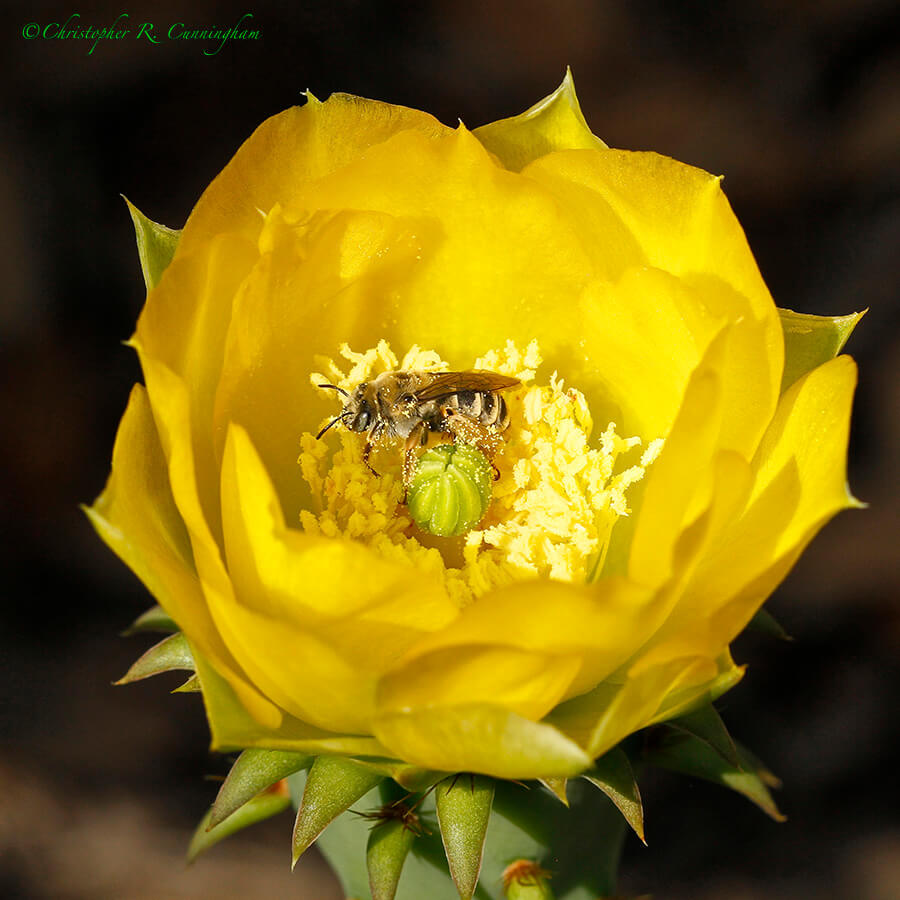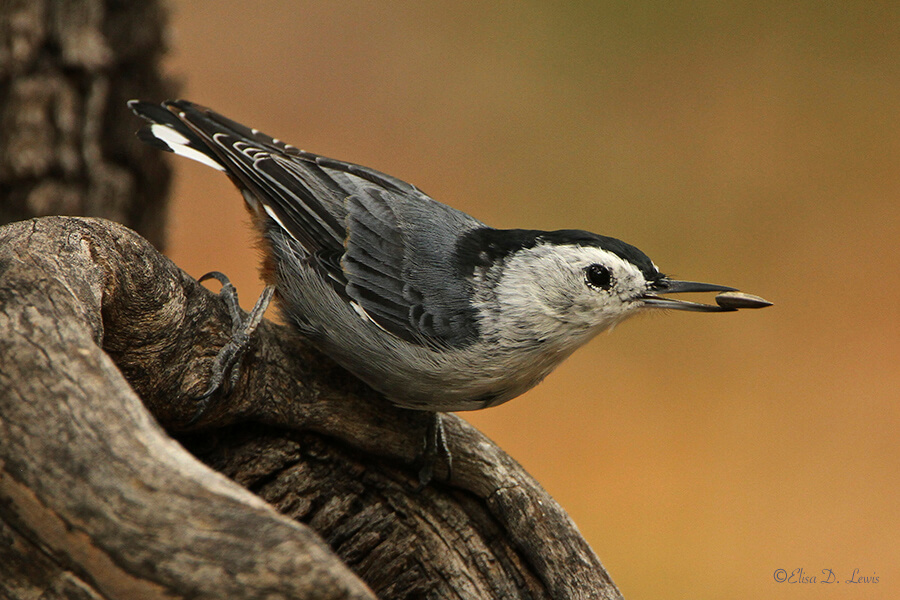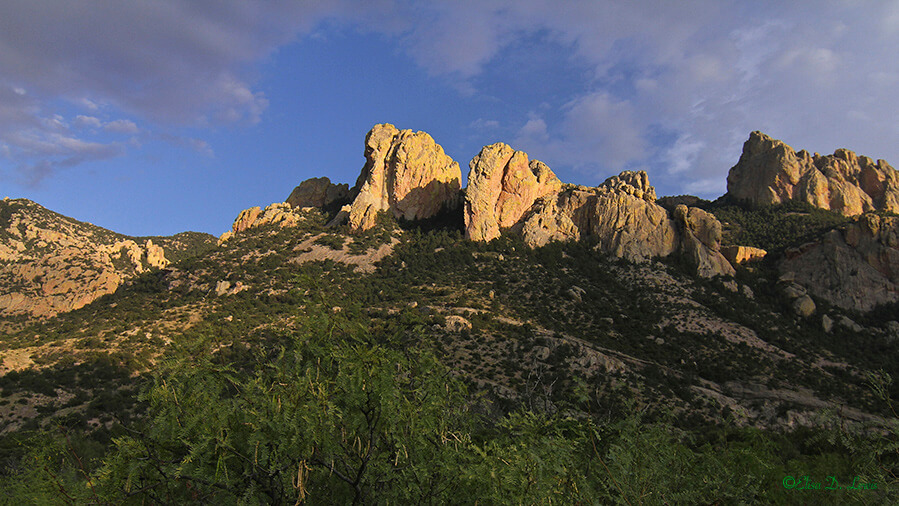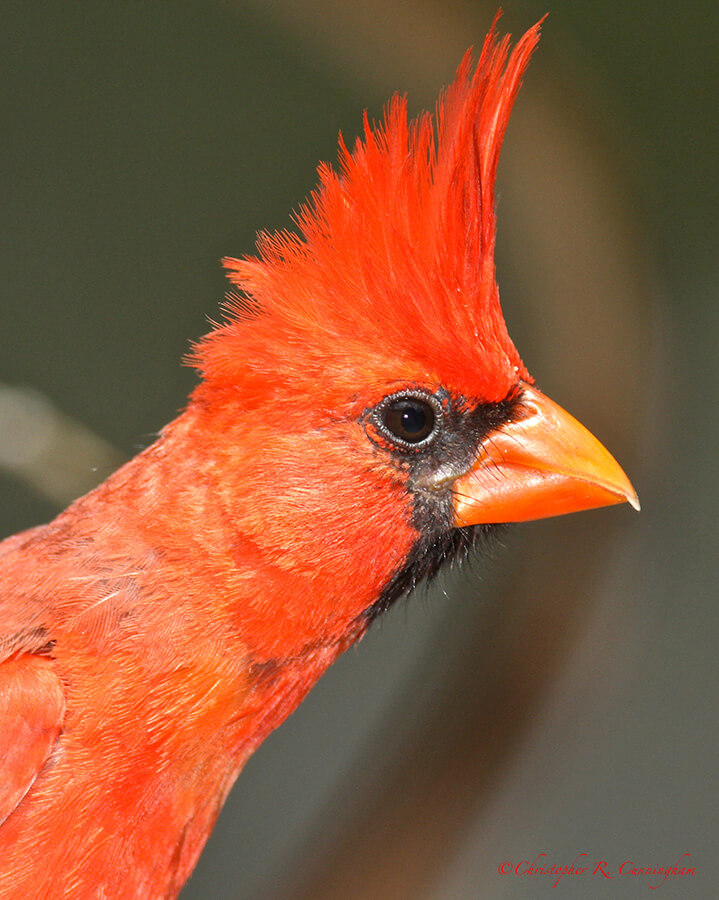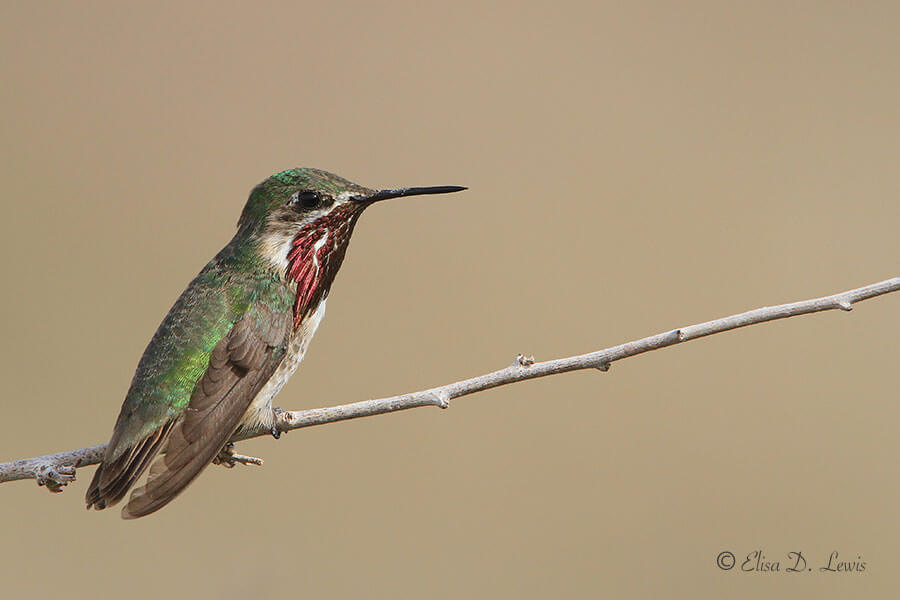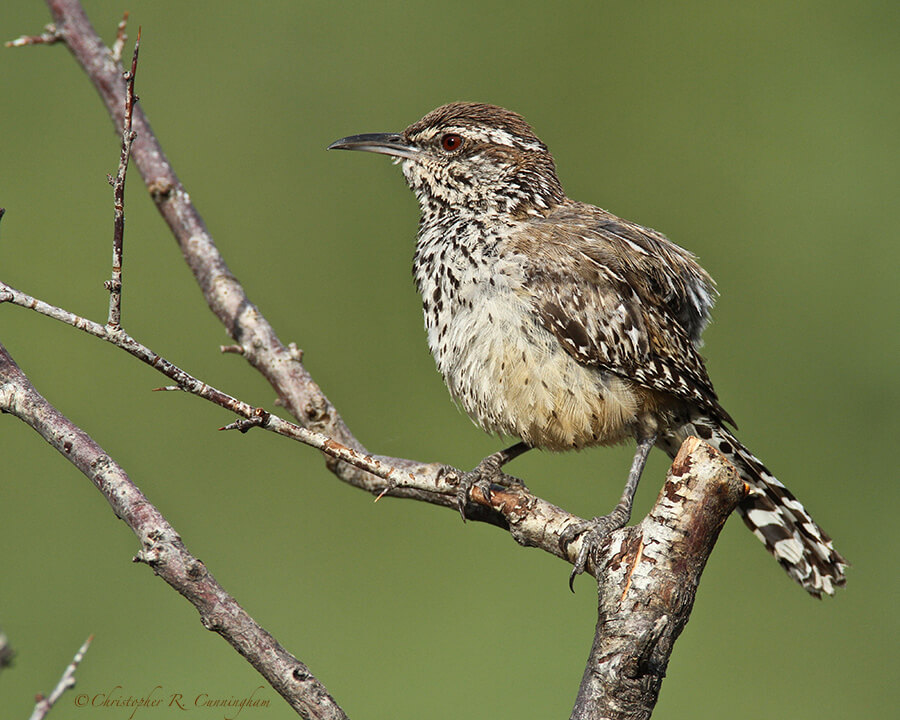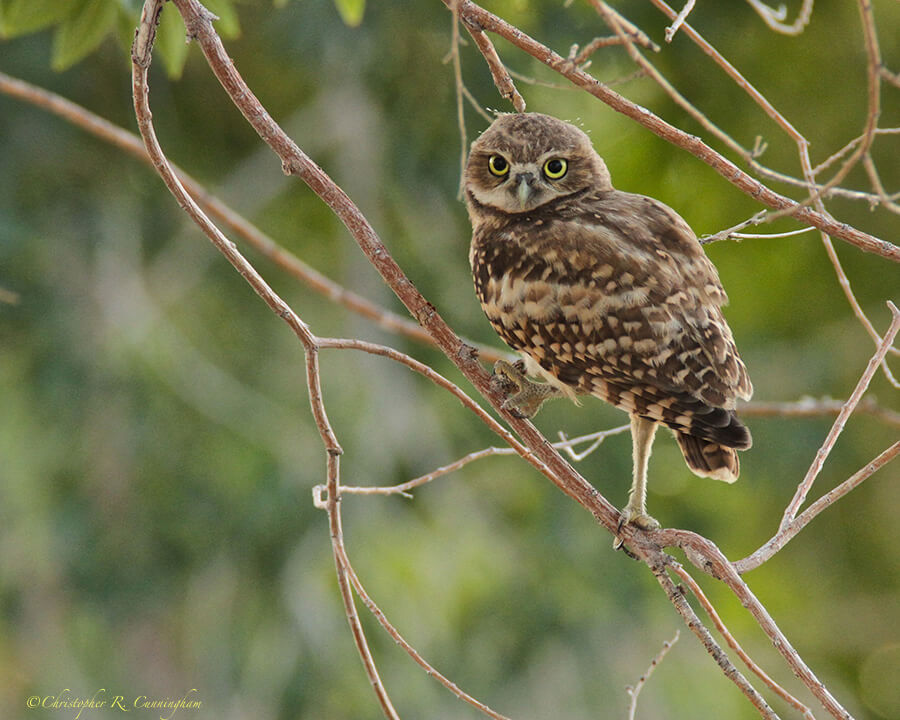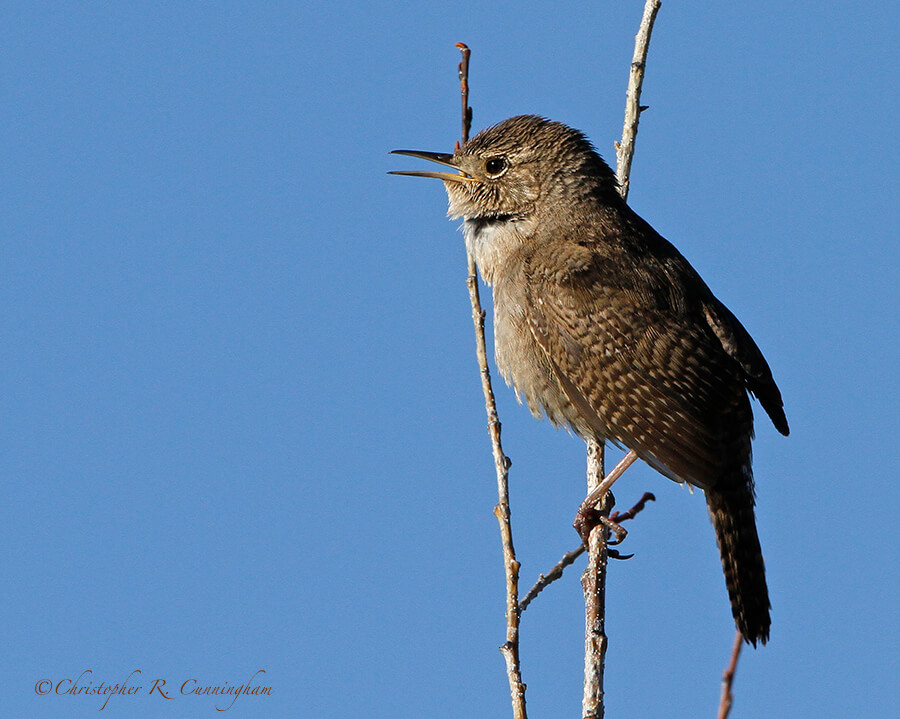
Several weeks ago it seemed as if Marsh Wrens were everywhere we were along the Upper Texas Coast. One minute they were singing, and the next they were hiding. Then, just as mysteriously as they appeared, the Marsh Wrens disappeared completely. A week later, there were Carolina Wrens–also alternately singing and sneaking–where the Marsh Wrens had been before. House Wrens, too, should be around at this time of year, but where are they? Hiding, no doubt.
The name for the Wren Family, Troglodytidae, refers to a “creeper into holes, or cave dweller.” One can, of course, think of many examples to justify this name. The booming voices of Canyon Wrens can be heard up and down the arid canyons they inhabit. They are fun to watch as they climb up vertical cliff walls and poke around nooks, crannies, and caves. House Wrens nest in cavities, and we’ve seen Rock Wrens in the Gila National Forest (New Mexico) nesting in limestone caves.
While birding the rain forests of Olympic National Park, Washington, we were treated to the incredibly loud and penetrating songs of the Winter Wren. Finding and photographing the birds was a challenge, though. These birds favor the understory vegetation among the massive fallen logs of mighty conifers. This humid, gloomy, atmospheric environment is low on light, and the birds scurried and sneaked suspiciously among the shadows when not serenading.
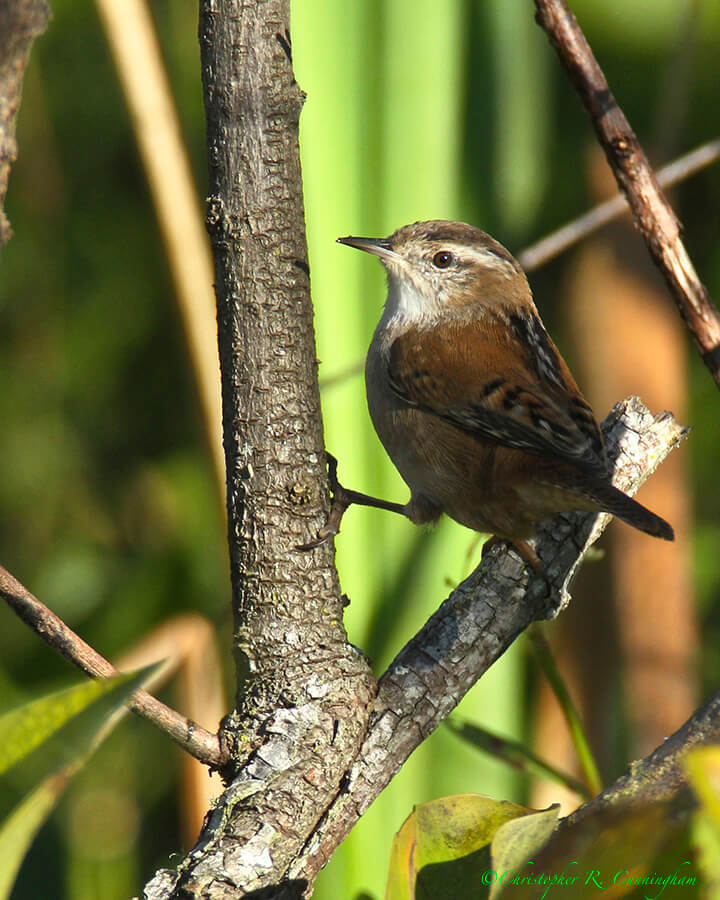
Be they House, Carolina, Canyon, Rock, Cactus, Marsh, or Winter, all wrens seem to have this now you-see-me, now-you-don’t personality. One minute they are singing their lungs out obliviously ten feet from the birder, the next they re scurrying and hiding.
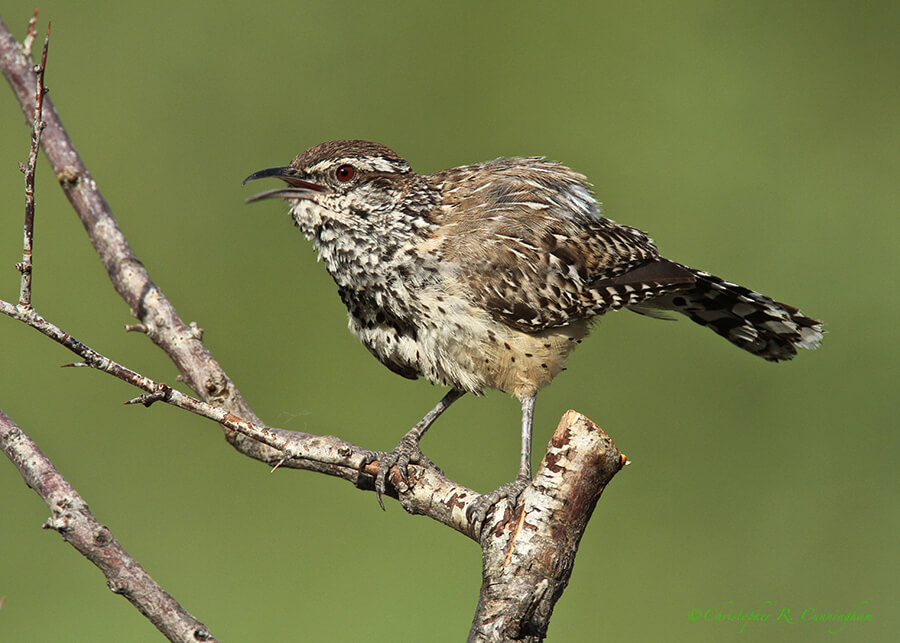
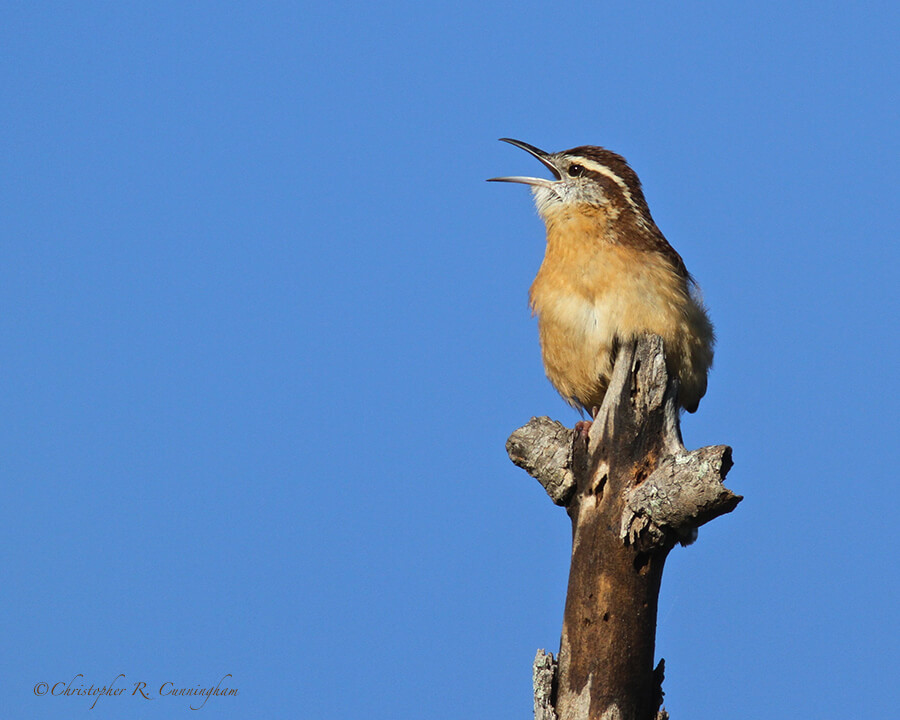
Of course, this contradictory behavior is the result of two competing impulses. Most of the time wrens are secretive and shy—like most birds as they try to remain inconspicuous to predators. Then the singing begins, for all the reasons songbirds sing. They have no secrets . . . from potential mates and pretenders to their kingdoms, that is.
How infinitely charming, though, when after an hour or so of playing hide-and-seek with the birder, a wren hops up onto stump or low branch and starts his aria, “L’amour est un oiseau rebelle” (Love is a rebellious bird)! Fortississimo, if you please!

Contradictions do not exist. Whenever you think you are facing a contradiction, check your premises. You will find that one of them is wrong.—Ayn Rand
©2014 Christopher R. Cunningham. All rights reserved. No text or images may be duplicated or distributed without permission.


